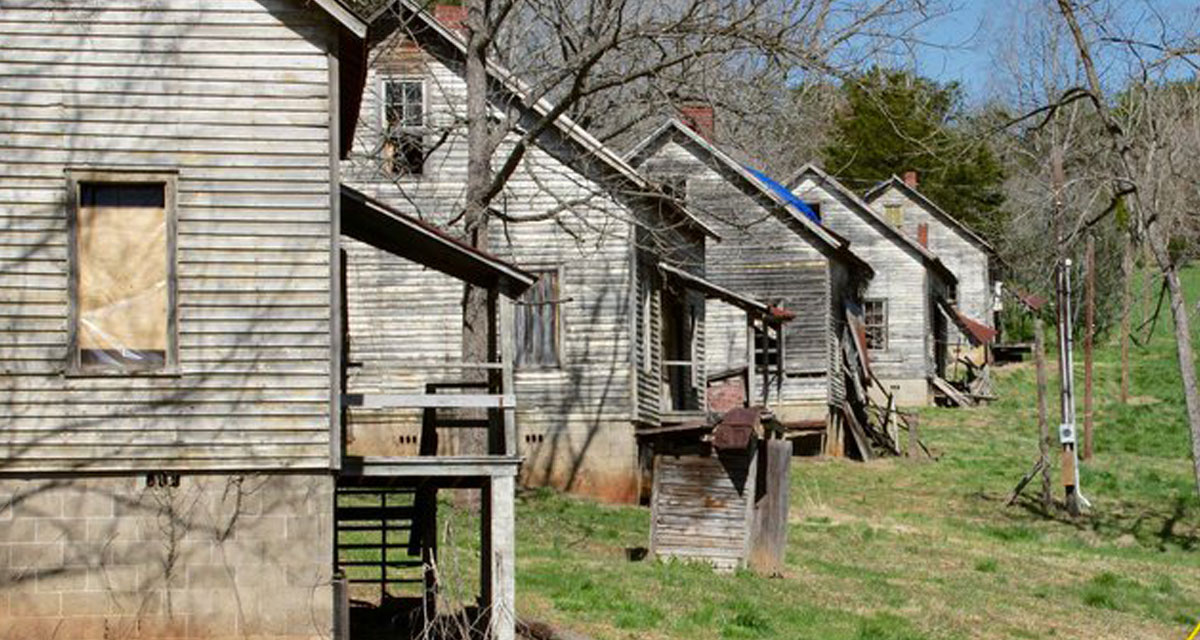With the creation of the first cotton textile mill around 1815 in Lincoln County, North Carolina, our state began a long process towards building its manufacturing industries. By 1900, the American textile industry was well on its way to moving to the Carolinas from New England. North Carolina became the center of the textile business by the 1920s and continued with outstanding success throughout the 20th Century.
Just off I-40 (exit 119), in a town called Hildebran, lies a “blink and you might miss it” little village on Henry River Road. But this village, steeped in history, abandoned by almost all its residents, and just recently coming back to life, is so very worth slowing down for!

The Henry River Manufacturing Company was in operation from 1905 through the late 1960s, producing fine cotton yarns that could be used to make something as fragile as lace and as sturdy as WW II parachutes…and many other things in between. Built as a planned community, the mill village was a self-sufficient complex with its own mill, dam, water, and fire-protection systems. There was also a company store that traded in a currency unique to the town. The majority of the village’s original buildings remain today. The mill itself burned to the ground in 1977 in what was believed to be a fire started by a strike of lightning.
The homes never had running water or a sewer system…even into the early 2000s, when the last native resident moved out. Outside most of the houses, you can still see the remains of the outhouses that were the standard in this town. What they lacked in modern conveniences, they made up for in beautiful surroundings and a tight-knit community. Today that beauty is still very evident, even as the buildings continue to decay. You can imagine how it all once was.
Henry River Mill Village has found new purpose and a promising future. On the National Register of Historic Places (since 2019), private owners purchased the land (in 2017) and all its buildings with the intention of reviving and renovating the area to highlight its history and make it usable again. They intend to restore the village one cottage at a time in order to preserve the past for the people who once called this place home.

Since the loss of the main mill building (in 1977), the focus of the village today is the two-story brick company store building. This building served as a mill office with the upper floor used as a school room, and for church services from 1907-1917.
The Village is now offering overnight accommodations in its first beautifully renovated cottage…cottage number 12. There are daily tours of the area, costing $15/per person, and special events throughout the year. You can have your own special event hosted in this unique location; they can create a spectacular dinner for you and a group; and they even offer photo shoots (which my family took part in with incredible results)!
If you visit Henry River Mill Village and think it looks familiar, it may be because parts of the village were turned into “District 12” for scenes of the 2012 film The Hunger Games. An empty storefront in the village was the location chosen to depict “Mellark’s Bakery,” the business owned by Peeta Mellark’s family in the film.
This beautiful town from the past is not just one place. It is a reminder of what once was. It is the beauty of what time and nature can do to a place when no one is left to care for it. And it is hope and potential for what is to come with restoration and renovation. Because of this, it’s important to come see things as they are now. Take a tour of the village and see for yourself the beauty that exists now, and then hear about the plans for the future. And if you have a chance…bring the family and have some pictures made! You will be glad you did.
Henry River Mill Village is located one mile south of Hildebran, NC on I-40, a short drive to a point halfway between Charlotte and Asheville (henryrivermillvillage.com/).



















